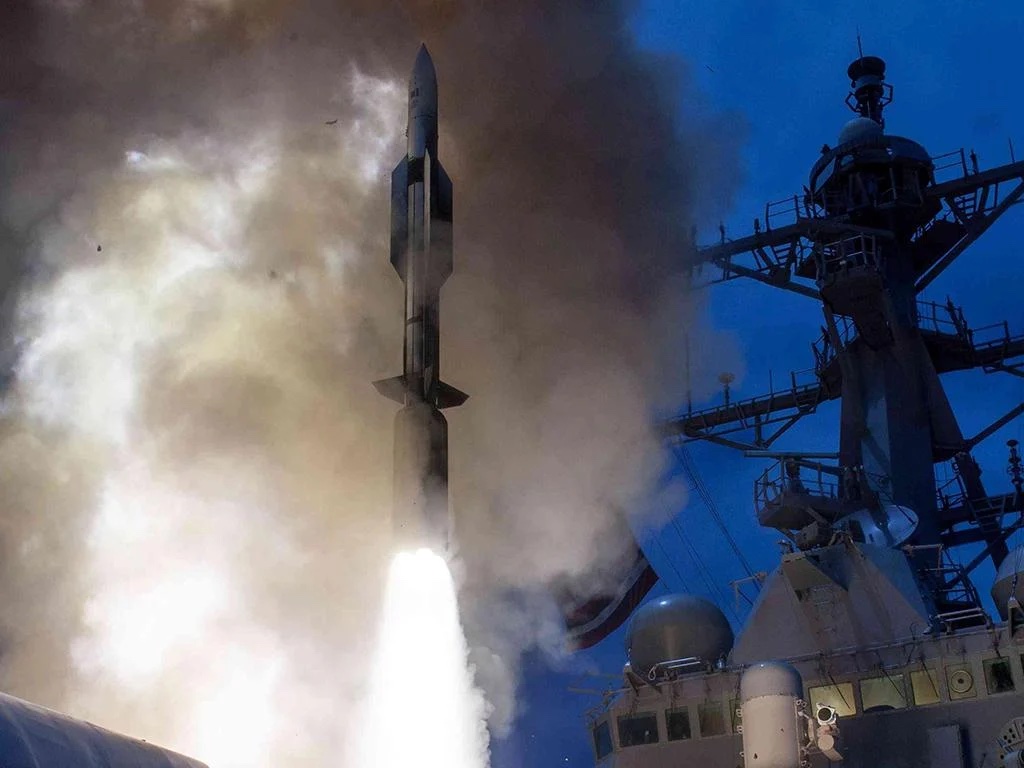Rocket engine manufacturer Ursa Major has signed a contract with the US Navy to design, 3D print and hot-fire test a prototype solid rocket motor (SRM) for the Standard Missile (SM) program.
The contract will see Ursa Major leverage its additive manufacturing-powered Lynx technology to design the next generation of SRMs optimized for manufacturability and reliability.
Signed under the Naval Energetic Systems and Technologies (NEST) Program, this project seeks to develop a new 3D printable design for the Mk 104 dual rocket motor, which powers the SM-2, SM-3, and SM-6 missiles. Manufacturing legacy models of the Mk 104 is a challenging and time-consuming process.
Within the US, high demand for SRMs is currently coupled with a shortage of domestic suppliers, with a need to restock US inventories and support Ukraine’s ongoing war efforts. Ursa Major is working to address this demand with Lynx, by speeding up and scaling the production of the key SM rocket components on American soil.
“We are proud of the Navy’s support and recognition of Ursa Major as a trusted partner to develop the next generation of Mk 104 solid rocket motors,” commented Joe Laurienti, Founder and CEO of Ursa Major.
“Our new approach to manufacturing SRMs allows Ursa Major to quickly develop high-performing motors at scale, driving volume and cost efficiencies to address this critical national need.”

Ursa Major to 3D print next-generation US Navy SRM
The contract will see Ursa Major design a 3D printing-optimized SRM to power the Navy’s Standard Missile arsenal. This includes the SM-2 surface-to-air missile, the SM-3 which is used for ballistic missile defense, and the SM-6, an anti-air, land, and sea missile. According to the US Missile Defense Agency, the SM-6 is the only missile capable of intercepting maneuverable hypersonic missiles.
To achieve this, Ursa Major will leverage its proprietary Lynx technology, which is optimized for the design and production of SRMs. Unveiled in December 2023, Lynx production units combine additive manufacturing with product-agnostic tooling to quickly and simultaneously produce multiple SRMs. The Lynx can be adapted to produce different casing sizes ranging from diameters of 2 inches to 22.5 inches, which includes most missiles such as stingers, GMLRs and other air defense systems.
According to Laurienti, this technology addresses demand in the defense sector for a faster, cheaper, scalable, and more flexible production process for high-performance SRMs. He believes that the new 3D printed SRM will be in the production phase in under three years, with much of that time being taken up by the qualification process.
“The result is an adaptable manufacturing process that is designed to mass produce multiple systems, rapidly switching from one model to another, producing reliable SRMs quickly and at scale, while leaving room to collaborate across the industry on energetics,” added Laurienti.
Ursa Major will deliver the project in collaboration with the US Navy’s Program Executive Office Integrated Warfare Systems (PEO IWS) 3.0 at the Naval Air Warfare Center – Weapons Division at China Lake, and the India Head-based Naval Surface Warfare Center.
“PEO IWS is excited to work with Ursa Major on this effort to bolster a critical component of the Nation’s industrial base,” stated PEO IWS 3.0’s director, Captain Thomas Seigenthaler. “The production of solid rocket motors is a top priority, and we are impressed with Ursa Major’s innovative approach to address manufacturing challenges.”

AM bolsters US defense capabilities
This is not the first time the United States Department of Defense (DoD) has turned to additive manufacturing to modernize the production of its missile technology. Previously, a 3D printed scramjet engine from propulsion system manufacturer Aerojet Rocketdyne was successfully flight-tested in a US hypersonic missile research project.
Developed in collaboration with the Defense Advanced Research Projects Agency (DARPA), Air Force Research Laboratory (AFRL) and Lockheed Martin, the engine is designed to propel an air-launched missile system that can reach speeds exceeding Mach 5. According to Aerojet Rocketdyne, 3D printing the drive system has allowed it to be constructed using 95% fewer parts than previous iterations.
More recently, Lockheed Martin, metal 3D printer manufacturer Velo3D and aerospace part inspection company Vibrant collaborated with the US DoD’s LIFT Institute. The project has seen the partners assess the validity of 3D printing hypersonic ramjet engines, and determine which processes are best for missiles capable of hypersonic flight.
Manufactured using Velo3D’s laser powder bed fusion (LPBF) technology, the engines were subjected to Vibrant’s acoustics-based Process-Compensated Resonance Testing (PCRT). This process analyzed key physical properties, including stress state, part integrity, geometry, and surface finish.
What does the future of 3D printing hold?
What near-term 3D printing trends have been highlighted by industry experts?
Subscribe to the 3D Printing Industry newsletter to keep up to date with the latest 3D printing news.
You can also follow us on Twitter, like our Facebook page, and subscribe to the 3D Printing Industry Youtube channel to access more exclusive content.
Featured image shows a US Navy SM-6 missile. Photo via the US Navy.


